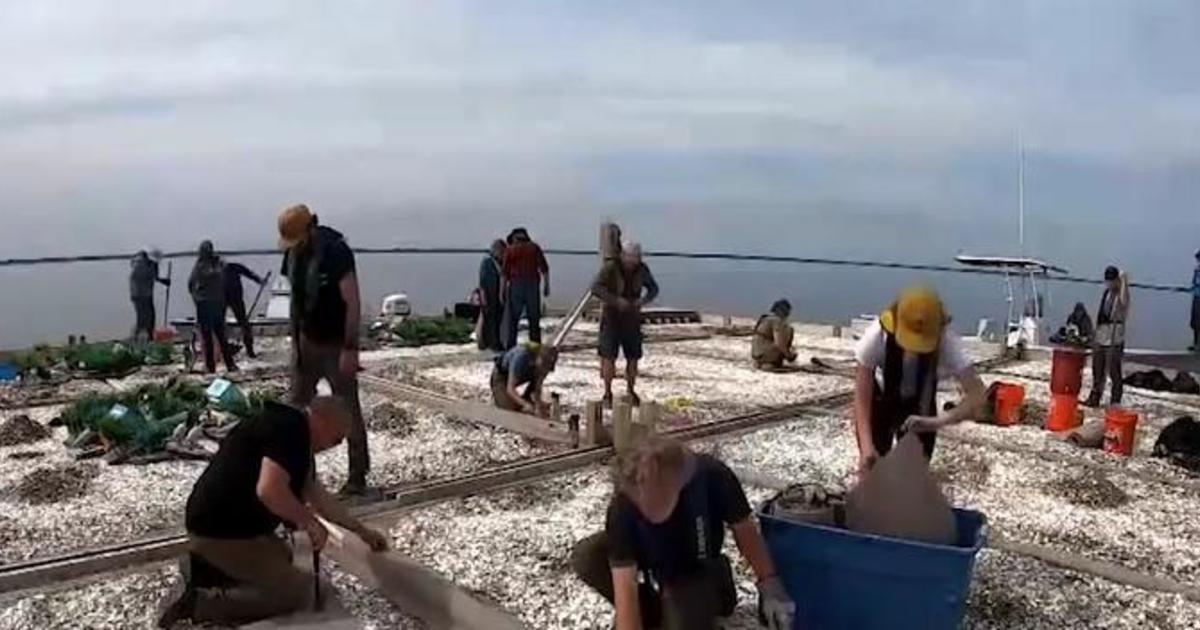Results Of Oyster Restoration Efforts In Chesapeake Tributaries Seem Promising
BALTIMORE (WJZ) -- Oysters may seem like simple creatures, but there's nothing simple about restoring them to the bay.
Alex DeMetrick reports, ongoing efforts to bring them back is showing some positive signs.
Millions of state and federal dollars, and over a decade of work, have gone into oyster restoration.
It starts with building a reef from recycled concrete to make a hard bottom atop the mud.
Then oyster shells are set in baths where larvae raised in the lab stick to the shells, becoming baby oysters called "spat."
All of this then goes into the artificial reefs in areas off limits to fishing.
The joint federal/state restoration includes Maryland's Harris Creek, Little Choptank and Tred Avon rivers, where 800 million oyster spat were planted last year.
Three rivers in Virginia are also being restored. The goal is to have 10 Chesapeake Bay tributaries restored by 2025.
Surveys of the restored areas are now out in a report, and the findings are encouraging.
"The oysters in the area are reproducing and we're starting to see new baby oysters coming, a second generation onto these restored reefs," says Doug Myers, of the Chesapeake Bay Foundation.
The goal isn't just more oysters, but enough more to weather an outbreak of oyster diseases common in the bay.
"We know that diseases go through cycles," Myers says. "Any of the oysters that survive that, they're going to pass on their genetics, resistance genetics, to the next generation."
With luck, that resistance would eventually spread bay-wide from the restored reefs.
Follow @CBSBaltimore on Twitter and like WJZ-TV | CBS Baltimore on Facebook



